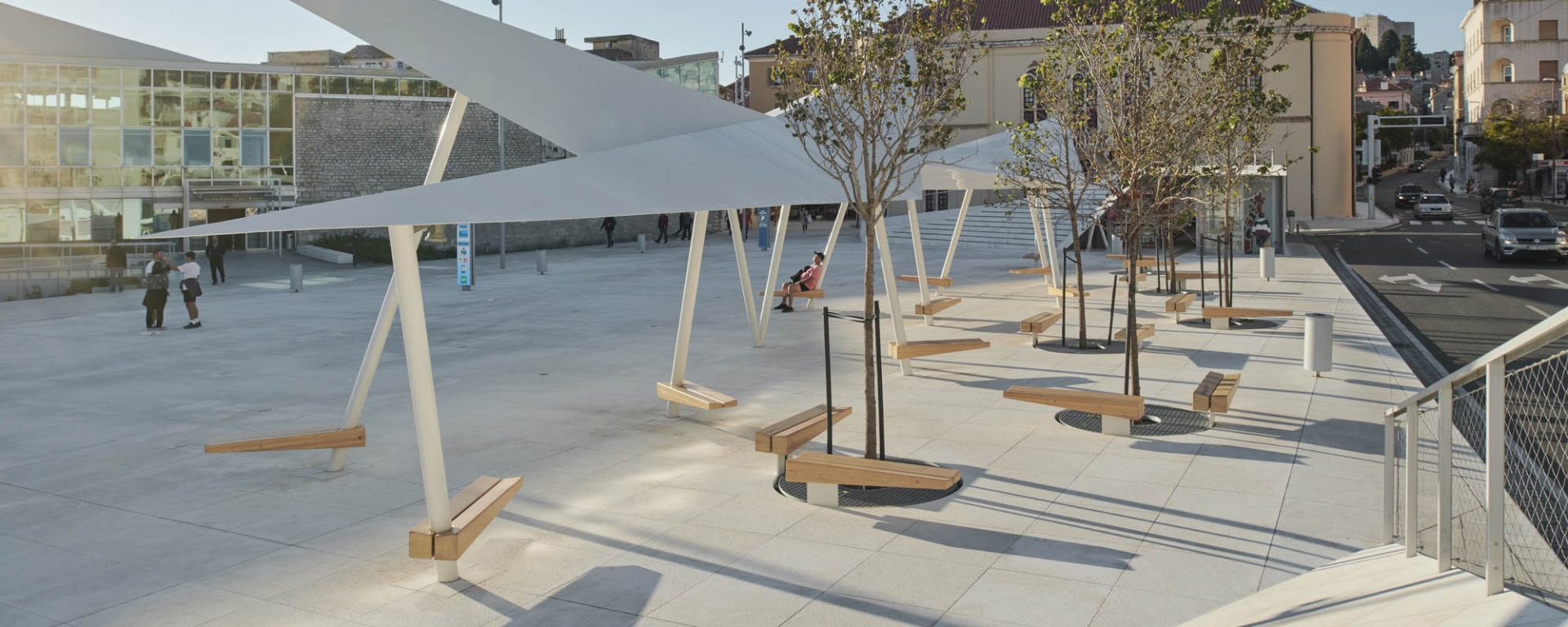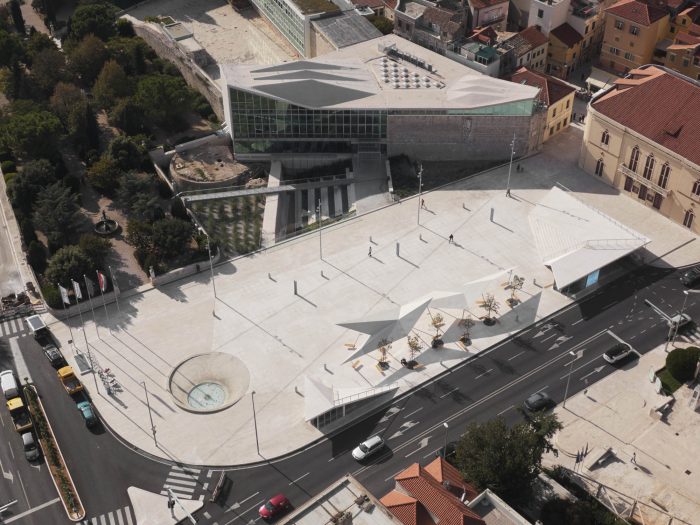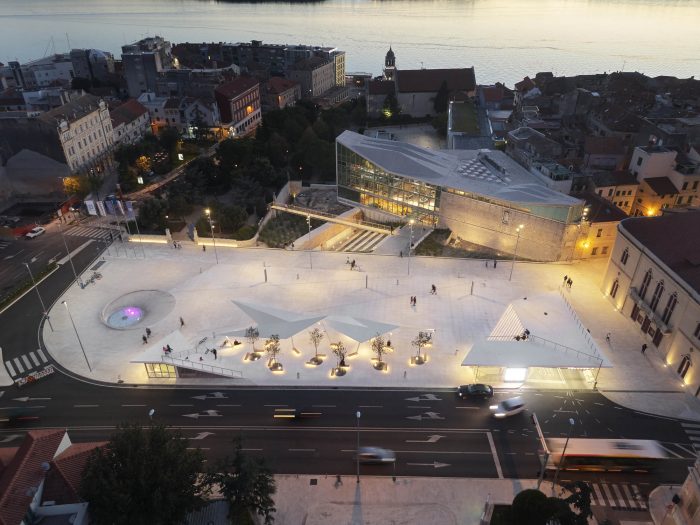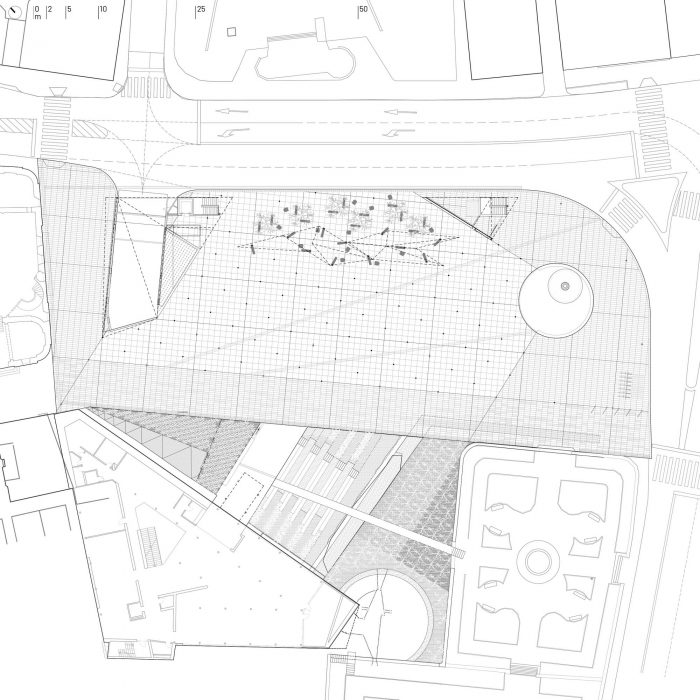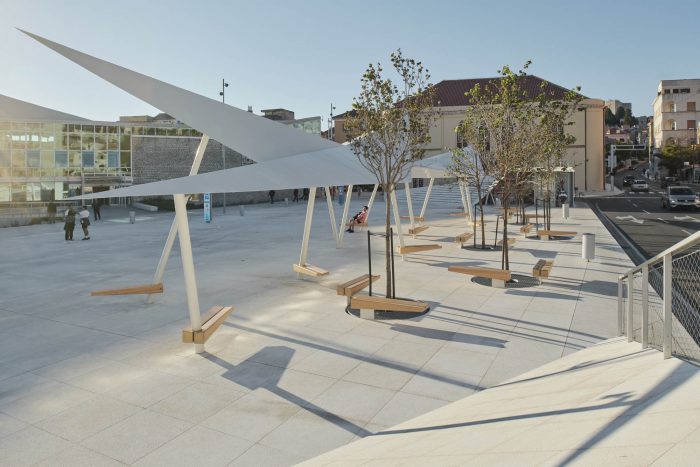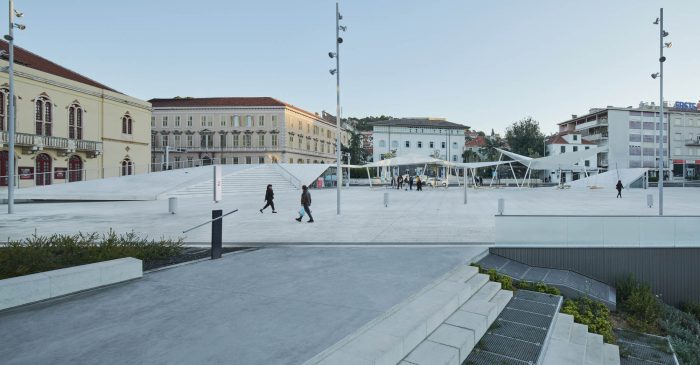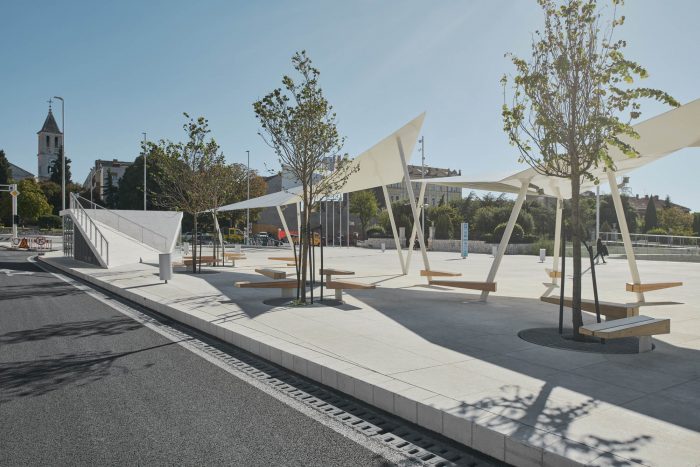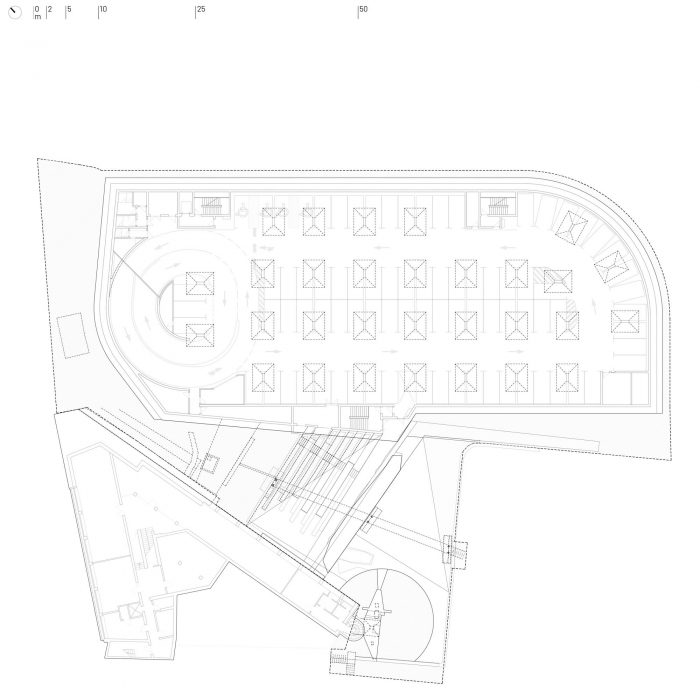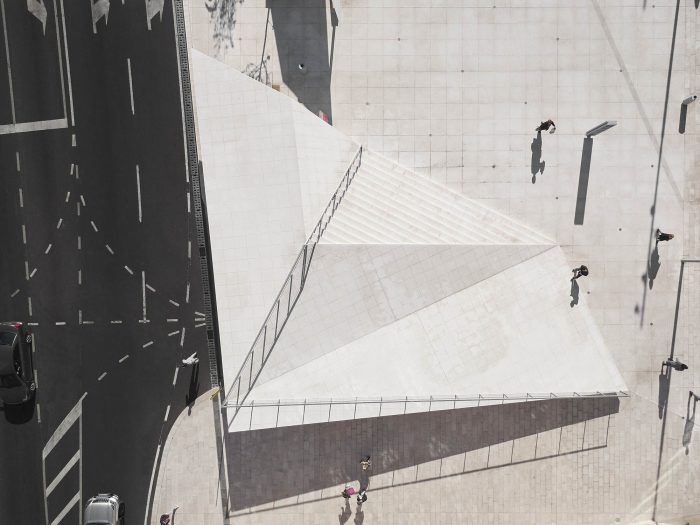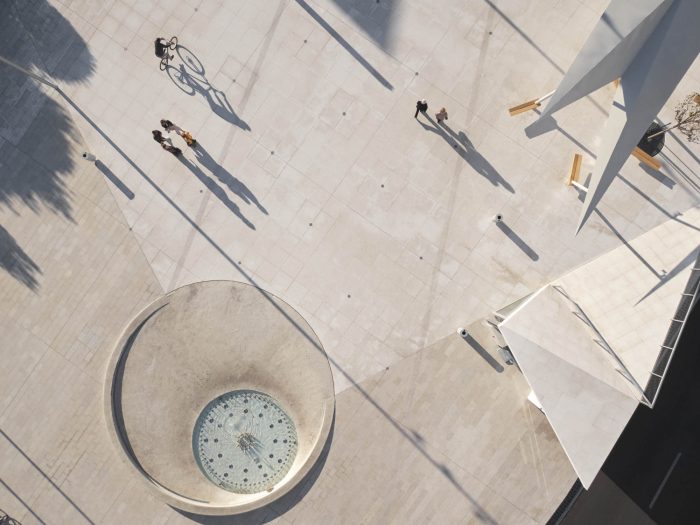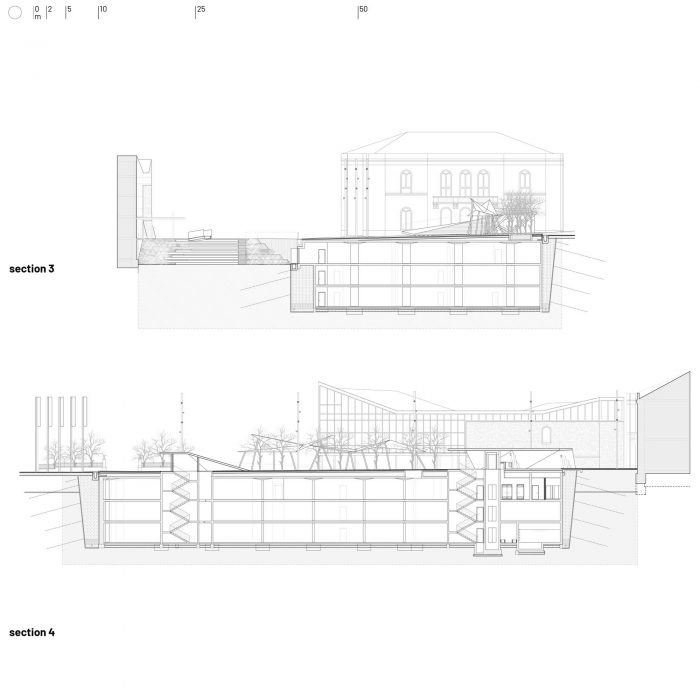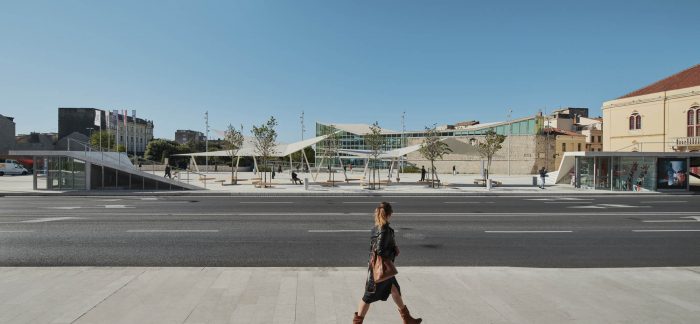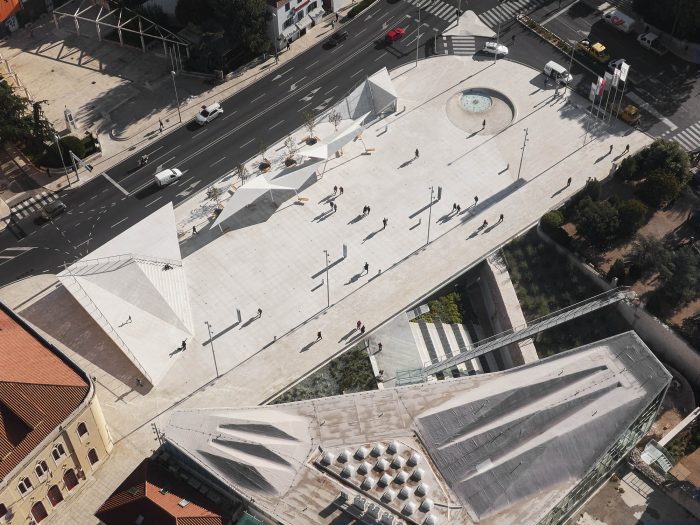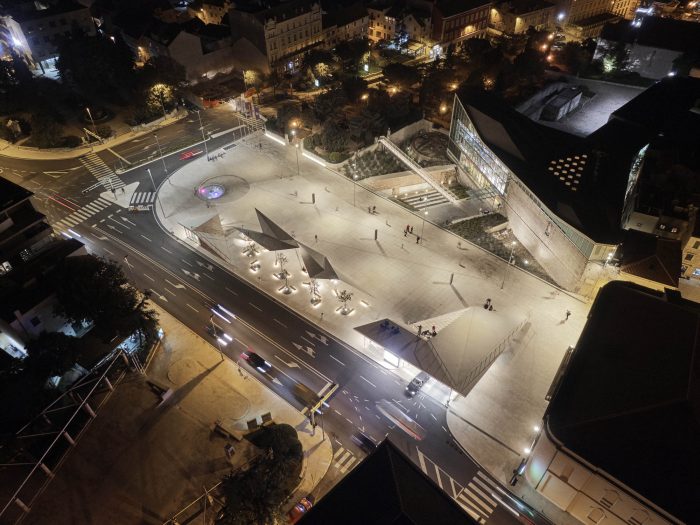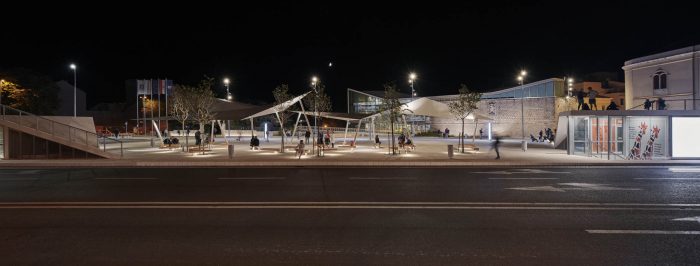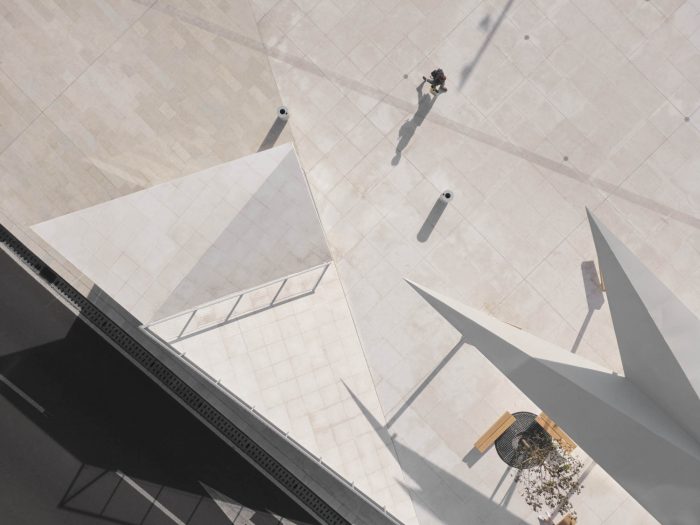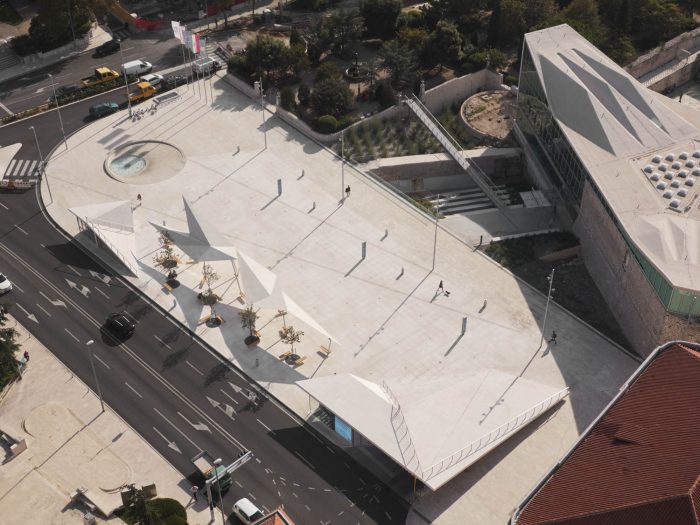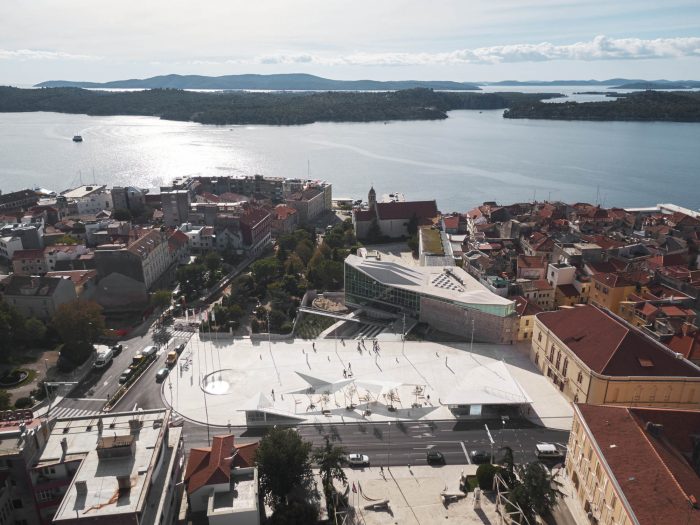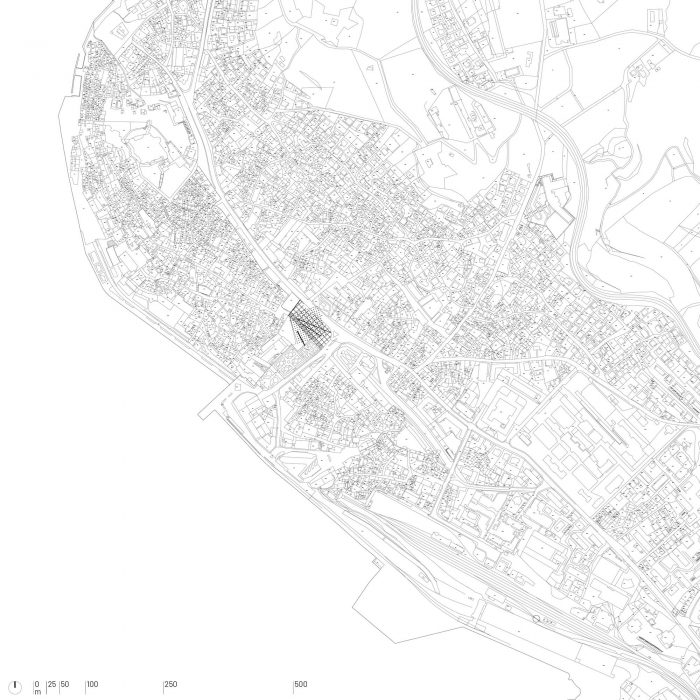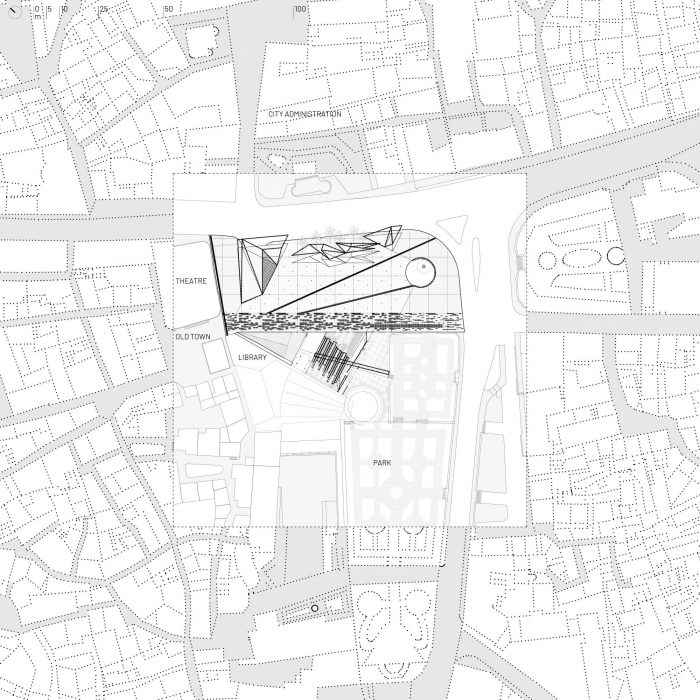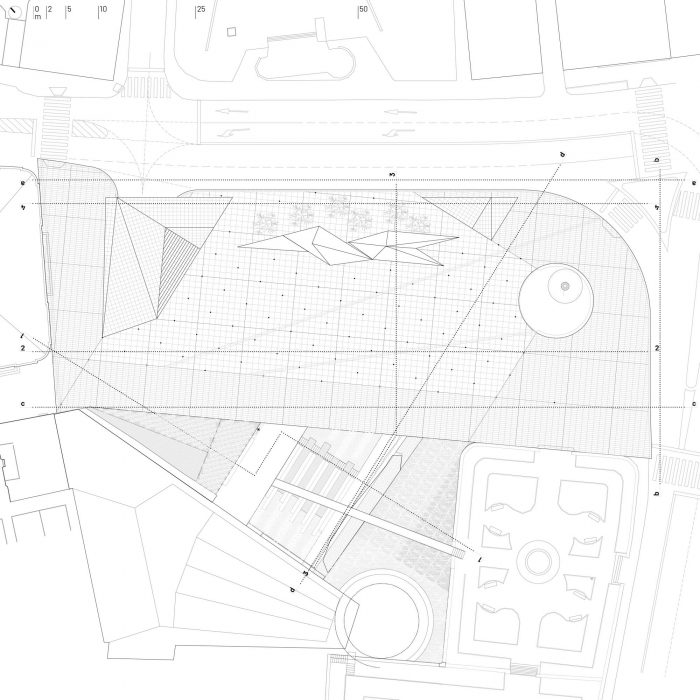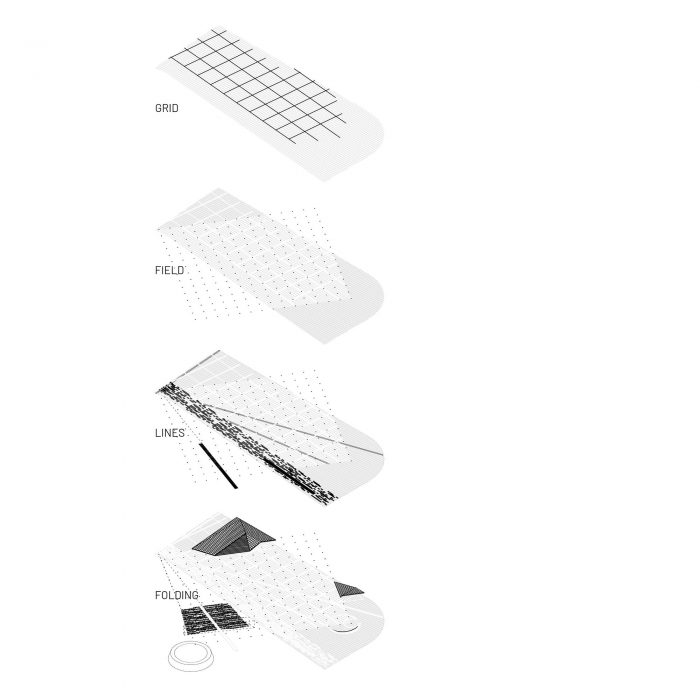新的希贝尼克主广场与考古公园和下面的车库/物流中心被设计成一个综合的城市、社会和基础设施领域,在中世纪、现代和当代城市之间设置了一个开放的对话,创造了一个巨大的社区,具有惊人的潜力,高高在上。
The new Šibenik main square with archaeological park and a garage / logistics centre underneath is designed as an integrated urban, social and infrastractural field setting an open dialogue between the medieval, modern and contemporary city, creating a vast community of astonishing potential that holds the sky aloft.
波利亚纳瓦原本是中世纪城门前的一个岩石海角的平顶。其特定的空间配置是几个世纪以来后续平地运动的结果,最终的轮廓在19世纪末形成。
Poljanawas originally a flat summit of a rocky promontory right in front of the Medieval city gate. Its specific spatial configuration is the consequence of subsequent levelling campaigns over the centuries, with the definitive outline taking shape in late 1800s.
在当代城市结构中,波利亚纳广场是一个无框架的动态空间,与不同的路线和网格相交,是城市公共场所的中心连接机制。
In the contemporary city structure, Poljana square is an unframed dynamic space, intersected with different routs and grids, a central connecting mechanism for the city’s public places.
场地方案将考古公园与下面的社会区域和基础设施物流中心整合在一起。空间褶皱形成了社交聚会的场所:开放式的庭院和舞台、桥、天幕和喷泉。城市的线条在平台上创造了张力和动态,而石头网络与基础设施箱使场地的组织灵活。
The site programme integrates archaeological park with the social zone and infrastructural logistic centre underneath. Spatial folds form places of social gathering: open tribunes and stages, bridge, canopy and fountain. Urban lines create tensions and dynamics in the platform while stone networks with infastructural boxes enable flexible organisation of the field.
Poljana广场被设计成一个连续的三维城市平台(场),没有任何干扰性的实体体量,可容纳各种社会活动,并在历史和现代城市人工制品之间进行调解。所提出的策略是开放型的,在现代城市的不确定场域中建立对话,在保留现有身份的同时,将未来的使用导向离散性改造的新场景。
The Poljana square is designed as a continuous three-dimensional urban platform (field) without any obtrusive solid volumes, which accommodates various social events and mediates between historical and modern urban artefacts. The proposed strategy is open-type, establishing a dialogue in the indefinite field of the modern city and, while preserving the existing identity, directs future use towards new scenarios in a discrete transformation.
广场的表面叠加了两个网络,一个是经典的网格/朝向剧院/和一个灵活的方块领域的点/由图书馆建筑和历史城墙的逻辑引导/在角落里的空间点缀,将周围的特征引入Poljana的空间。表面被日常生活和历史中认识到的运动方向所激活–以及沿着它们的会面地点。在网络相交的区域,空间褶皱在亭子的屋顶上形成延伸的、凸起的表面。天幕,一个漂浮的动态艺术品,提供了一个链接,并定义了广场的空间边界,从而在新时代创造了一个对话和形式的连续性。
The surface of the square superimposes two networks, a classic grid /towards the theatre/ and a flexible square field of points /directed by the logic of the library building and historical ramparts/ with spatial accents in corners which introduce the surrounding features into the space of the Poljana. The surface is activated by movement directions recognized in everyday life and history – and in meeting places along them. In network intersecting areas, spatial folds form extended, raised surfaces on the roofs of the pavilions. The canopy, a floating dynamic artefact, provides a link and defines the spatial boundary of the square, thus creating a dialogue and continuity of forms in the new age.
设计由地下和地上部分组成,通过对传统地中海和工业材料的现代诠释进行整合。地下结构的设施名称为 “车库和物流中心”,采用钢筋混凝土结构和工业地板。地上部分是一个现代的城市平台,用地中海白石铺设,有钢制围栏和结构/桥梁,天篷,折叠…/。天篷的结构是在斯普利特造船厂预制的,其设计是为了与现代主义图书馆建筑进行积极的形式对话。
The design consists of an underground and an above-ground part integrated by a modern interpretation in traditional Mediterranean and industrial materials. The underground structure has facility designation /garage and logistics centre/, with reinforced concrete construction and industrial floors. The above-ground section is a modern urban deck paved with Mediterranean white stone, with steel fences and constructions /bridge, canopy, folds…/. The structure of the canopy, pre-manufactured in the Split shipyard, was designed to run an active formal dialogue with the modernist library buildings.
广场上可见的灵活组织的基础设施领域,由连接点/城市盒子元素/组成,用于接收城市装置,允许轻松创建各种活动场景和艺术表演。
The flexibly organized infrastructural field visible in the square area, composed of connection points /urban box elements/ for the reception of urban fixtures, allows for easy creation of various event scenarios and artistic performances.
地下物流中心包括一个移动管理中心、电动汽车充电站和活化老城区和岛屿供应区。该空间是欧盟 “希贝尼克市综合交通 “整体项目的一个组成部分。
The underground logistics centre includes a mobility management centre, charging stations for electric vehicles and revitalizing old town and island supply area. The space is an integral part of the overall EU project Integrated Mobility in the City of Šibenik.
建筑师:Atelier Minerva, Faculty of Architecture, University of Zagreb, Institute of Architecture
面积:11800 m²
年份:2020年
照片:Ervin Husedžinović、Marko Mihaljević
制造商:Aco, Brodosplit d.d., Drvene konstrukcije, Duly, Kamen d.d. Pazin, Niveto, Telektra
合作者:Nedjeljka Bobanović、Ivana Curić、Bernarda Lukač、Lucija Megla
Grafic Design Air Mail Twins : Stanislav Habjan; Petikat
景观设计师:Ksenija Diminić
城市 : Šibenik
国家:克罗地亚
Architects: Atelier Minerva, Faculty of Architecture, University of Zagreb, Institute of Architecture
Area: 11800 m²
Year: 2020
Photographs: Ervin Husedžinović, Marko Mihaljević
Manufacturers: Aco, Brodosplit d.d., Drvene konstrukcije, Duly, Kamen d.d. Pazin, Niveto, Telektra
Collaborators:Nedjeljka Bobanović, Ivana Curić, Bernarda Lukač, Lucija Megla
Grafic Design Air Mail Twins:Stanislav Habjan; Petikat
Landscape Architect:Ksenija Diminić
City:Šibenik
Country:Croatia

